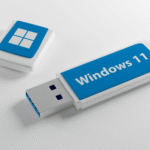Your first week working from home can feel like a long layover. You have Wi-Fi, a laptop, and a chair that squeaks. You also have dishes in the sink, a neighbor mowing, and a cat on your keyboard. It is a lot.
Remote work means you do your job from a location outside a traditional office. This guide shares remote work tips for beginners that make setup simple, focus easier, teamwork smoother, and daily habits healthy. You will learn how to work from anywhere, protect focus at home, manage time well, and build a routine that sticks.
Quick wins you can do today:
- Put your laptop near a window for better light and mood.
- Pick your top 3 tasks and block two 90-minute focus sessions.
- Use a headset, not your laptop mic, for clearer calls.
- Batch email twice a day, morning and afternoon.
- Set a shutdown time and stick to it for a clean finish.
This is for beginners who want less stress, more results, and a healthy routine. Simple language, proven steps, zero fluff.
Set Up a Workspace That Helps You Focus and Feel Good
A good workspace is not fancy. It is stable, bright, and set up so your body feels okay after 6 to 8 hours. Start with the basics.
Pick a spot with stable internet and decent light. Face natural light if you can. Avoid high-traffic areas like the kitchen. A corner of a bedroom or a quiet hallway works fine.
Chair and desk basics matter. Keep wrists and elbows in a neutral line. Aim for 90-degree elbows and shoulders that feel relaxed. Raise your screen to eye level so you do not crane your neck. Use low-cost fixes, like a pillow for seat height, books to raise your laptop, and an external keyboard if you can.
Tech checks save you during calls. Make sure your Wi-Fi is strong where you sit. Use a webcam at eye level, a reliable mic, a power strip, and a backup charger nearby. Test audio and lighting before meetings.
Cut distractions early. Turn off the TV. Silence non-work apps on your phone. If you live with others, use a door sign or a simple signal, like headphones on, which means I am working.
Create start and end cues. In the morning, open your laptop, fill your water bottle, and set your first focus block. At the end, run a quick shutdown checklist and close your laptop so your brain knows work is done.
Checklist for a quick setup:
- Seat height lets feet rest flat and elbows near 90 degrees
- Screen at eye level using books or a stand
- Headset or USB mic ready, camera at eye level
- Stable Wi-Fi in your work spot, power strip within reach
- Phone on focus mode, family signal set, water-filled
Choose the Right Spot and Lighting
Light, noise, and privacy shape your focus. Natural light boosts energy and reduces eye strain. Noise raises stress and breaks concentration. Privacy helps you think and speak freely.
Sample setups:
- Small spaces: Use a fold-out table near a window, face the light, and store gear in a bin when done.
- Studio: Create a “work zone” with a rug and lamp. Sit so your back faces a wall, not your bed.
- Shared home: Take a corner in the quietest room midday. Use a door sign or lamp color to signal work mode.
If noise is a problem, wear closed-back headphones with soft background music or white noise.
Ergonomics on a Budget
Simple posture cues keep your body happy:
- Ears over shoulders, chin level, not forward
- Relaxed shoulders, elbows around 90 degrees
- Wrists neutral, not bent up or down
- Screen top at eye level, about an arm’s length away
Cheap fixes that work:
- Books as a laptop riser, plus an external keyboard and mouse
- Rolled towel or small pillow for lumbar support
- Box or sturdy binder under feet if they do not reach the floor
Tech Basics: Internet, Audio, and Power
Do a 60-second pre-call test:
- Speed check: run a quick test or toggle Wi-Fi to refresh
- Mic check: say a sentence and watch the input level move
- Camera framing: head and shoulders visible, eye level, clean background
- Background check: remove clutter, close extra tabs, silence alerts
If calls are common, try a USB mic or a wired headset for clarity. Use a surge protector to guard your gear and keep a small battery pack for backup power on the go.
Win Your Day: Plan Your Tasks, Protect Focus, and Avoid Burnout
A simple daily system beats a stack of apps. Pick your top 3 tasks. Time block your calendar with two deep work sessions and one admin block. Leave buffers so life can happen.
Use focus methods to give your brain structure. Try a Pomodoro timer or two 50-minute deep work blocks with 10-minute breaks. Use website blockers during focus time so you do not drift.
Manage pings with intention. Batch email and chat checks at set times. Use status messages so people know when you are heads down.
Use AI as a helper for writing, notes, and summaries, then review before you send. It saves time, but you are the editor.
If you want more ideas, explore these remote work productivity tips for 2025. You will find balanced routines, boundary scripts, and focus tools that fit a beginner’s day.
Plan Your Top 3 and Time Block Your Calendar
A one-page daily plan that just works:
- Top 3 tasks: outcomes, not chores
- Two 90-minute deep work blocks: morning and early afternoon
- Admin block: 30 to 45 minutes for email, messages, and small tasks
- Break slots: three 10-minute walks or stretch breaks
- Wrap up: 15 minutes to log wins and set tomorrow’s top 3
Example:
- Top 3: finalize proposal draft, analyze Q2 data, update client notes
- Deep Work 1: 9:00 to 10:30 proposal draft
- Deep Work 2: 1:00 to 2:30 data analysis
- Admin: 11:00 to 11:45 email and messages
- Breaks: 10:30, 2:30, 4:00
- Wrap up: 4:45 to 5:00
Stay Focused With Simple Methods
- Pomodoro: 25 minutes focus, 5 minutes break, after four rounds take a longer break.
- 52 17: 52 minutes deep work, 17 minutes real rest for your brain.
Mute non-work apps, close extra tabs, and keep only what you need on screen.
Helpful tools:
- Free site blocker: LeechBlock NG (Firefox) or StayFocusd (Chrome)
- Focus playlist: low-fi beats, classical piano, or rain sounds at low volume
Tame Email and Chat Without Missing Anything
Batch messages at set times, like 11:00 and 3:30. Keep your inbox closed between blocks.
Sample status messages:
- In deep work until 2 pm. Urgent, call me.
- Writing heads down 9 to 10:30. Back online at 11.
- Offline for school pickup 3 to 4. I will reply after 4.
Use AI as a Helper, Not a Crutch
Prompts you can try:
- Draft an email reply: “Write a clear reply that confirms Friday delivery, asks for logo files, and sets next check in for Monday.”
- Summarize a meeting note: “Summarize key decisions, blockers, and owners from this transcript.”
- Make action items: “Turn these notes into tasks with deadlines and owners.”
Always check facts and fix tone. Do not share private info or client data in tools you do not control.
Communicate Like a Pro: Clear Messages, Boundaries, and Time Zones
Trust grows when your messages are clear and your boundaries are visible. Choose the right channel, write for action, and make time zones a team sport.
Pick the right channel for the message. Chat for quick asks, email for longer updates, and video for complex topics or sensitive news.
Write updates people can act on. Keep one goal per message. Use bullets, show the deadline, name the owner, and ask for a decision.
Set boundaries that stick. Share office hours and response times. Use calendar blocks for deep work and lunch. Protect the plan, not every minute.
If your team spans time zones, use shared calendars, add world clocks, and rotate meeting times so it is fair. Record key updates so no one misses context.
When last-minute requests pop up, it is okay to push back kindly. Offer options without a hard no.
Choose the Best Channel for the Job
Rule of thumb:
- Chat: quick ask, no heavy context
- Email: detailed update, decisions to track
- Video: complex topic, brainstorming, or sensitive news
Examples:
- Chat: “Can you share the latest deck link?”
- Email: “Quarterly metrics summary with next steps.”
- Video: “Walkthrough of the new process with Q&A.”
Write Updates People Can Act On
Template:
- Goal: what this update is about
- Context: brief background
- Decision Needed: the one choice to make
- Deadline: when you need it
- Owner: who is on point
Sample subject line: “Website launch blockers, decision by 2025 06 14”
Respect Your Time Without Sounding Cold
Scripts you can copy:
- Office hours: “I am online 9 to 5 local time. I reply within one business day.”
- Deep work block: “I am in focus time 1 to 3. I will reply after 3.”
- Polite no with options: “I cannot turn this by 4. I can deliver a draft by 6, or a final first thing tomorrow. Which works best?”
Mini script for last-minute requests:
- “I want to help. With the current queue, I can start after 2 pm and send by 5, or move Task B to tomorrow to start now. What is your priority?”
Work Across Time Zones With Less Stress
Use world clocks on your phone and calendar. Add your teammates’ time zones to their contact names. Share calendars and set working hours so others can see overlap. Record short video updates for async reviews. Rotate meeting times monthly so the same people are not always staying late or waking early.
Stay Healthy and Social: Move, Eat, and Connect So You Do Not Burn Out
Remote work should feel human. Take micro breaks to prevent aches. Follow the 20 20 20 rule for your eyes. Keep meals simple. Drink water. Step into daylight. Plan social touch points. End each day with a clean shutdown.
For more daily habit ideas and wellness routines that fit a busy schedule, visit these lifestyle guides on health and daily habits.
Move Often and Protect Your Eyes
Two-minute stretch flow:
- Neck rolls, slow circles, 3 each way
- Shoulder squeezes, hold 5 seconds, repeat 5 times
- Forearm stretch, palm down then up, 15 seconds each
- Hip opener, stand and march in place, 30 seconds
- Calf raises, 15 slow reps
Eye care with 20 20 20:
- Every 20 minutes, look at something 20 feet away for 20 seconds
Add a 5 to 10-minute walk between calls when you can.
Eat, Drink, and Get Sunlight
Simple lunch formula: protein, fiber, color.
- Examples: tuna and chickpea salad, eggs with whole grain toast and tomatoes, chicken wrap with spinach and peppers
Water goals: keep a bottle on your desk and aim for 6 to 8 cups during work hours. Add a pinch of salt or lemon for taste if needed.
Daylight break: take 10 minutes outside before noon for a natural mood lift.
Do Not Work Alone All Week
Connection keeps you motivated.
- Coworking once a week to change the scene
- Virtual coffee chats with a teammate for 15 minutes
- Join a local meetup related to your field
End the week by sharing one win with your team. It builds momentum and shows progress.
Close Your Day With a Shutdown Routine
End of day checklist:
- Log wins in a simple doc or notes app
- Set tomorrow’s top 3 tasks
- Clear your desk and close your laptop
- Turn off work apps and mute notifications
- Do a hobby or take a short walk to mark the end
Conclusion
Remote success sits on four pillars: workspace, focus, communication, and health. Set up a stable, bright spot. Plan your top 3 and protect deep work. Communicate with clear updates and kind boundaries. Move your body, eat simple meals, and connect with people.
A 30-day starter plan:
- Week 1: Build your workspace and run a daily shutdown checklist.
- Week 2: Use two deep work blocks each day with a site blocker.
- Week 3: Share office hours, batch messages, and use one status script.
- Week 4: Add a daily walk, 20 20 20 eye rule, and one social touch.
Pick one tip to do today. Keep it simple, keep going, and you will thrive from anywhere.














